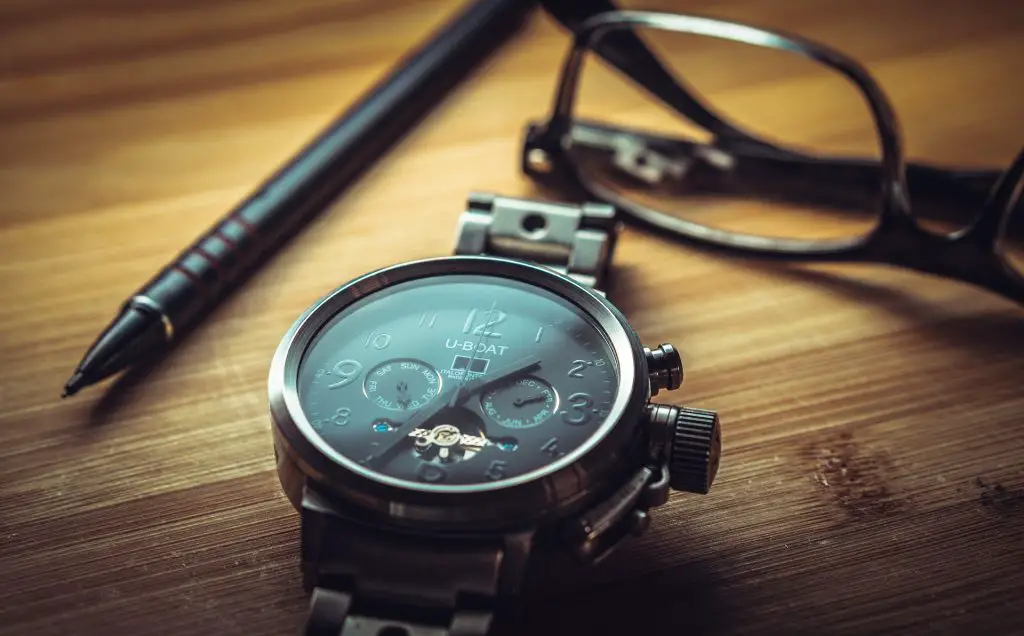Do you ever look at your watch and wonder what that little knob is? You may be familiar with the term “crown”, but do you really know what it is and why it’s there? The crown on a watch serves an important purpose and can come in many different shapes and sizes.
This in-depth guide from the experts at CALIBRE will help you understand the purpose of a watch crown.
- Function of the watch crown
- History of the watch crown
- Types of watch crowns
- How to wind a watch crown
- Conclusion
- Other handy guides
Function of the Watch Crown
The crown on a watch is an integral part of the timepiece. It is used to set and adjust the various functions including time and date. Many people may be unfamiliar with what the crown does or how it works, so it’s important to understand this key feature of a watch.
The crown is located on the side of the case, usually sticking out from one end. It can come in different shapes and sizes depending on the brand and model. For example, some may have one large crown while others have two – one for setting time and another for winding if manual winding is required. To perform its functions, you will need to pull out or push in the crown depending on what type of movement your watch has.
History of the Watch Crown

Back way back when, before the 1800s when using a key was how you would wind watches, the crown was yet to be invented. It wasn’t until the 1830s when Antoine Louis-Breguet created something similar to the mechanical watch winding system we are familiar with today and called this a knob.
Watchmakers such as Jean Adrien Philippe continued to develop this design until the knob was forged into how we see this part of a watch today, taking royal design influence until this part became known as the crown.
Types of Watch Crowns
Watch crowns come in all sorts of shapes and sizes, depending on their purpose and how they are used. There are three primary types of watch crowns, let’s take a look at these below:
Screw-down watch crown
The design of a screw-down crown is quite simple. It consists of an externally threaded stem and an internally threaded tube that fits snugly around it. When screwed together, this securely seals off the stem from any liquids or debris that could potentially damage its delicate internal components. Additionally, these designs are often accompanied by gaskets or O-rings which provide further protection against moisture seeping into the movement.
Recessed watch crown
This feature became popular around the 1950s and was developed by Rolex. Recessing the crown into its case, allowed for greater security as well as making it more difficult to accidentally move while keeping its size relatively small. In addition, due to being sunken into its case, dirt and dust are prevented from entering which can damage internal parts of the watch’s movement over time.
Regular Crown
The regular watch crown consists of three parts: an outer tube, a stem, and an inner knob. The design is known as the ‘regular watch crown’ as it is simply crafted to be a push-and-pull design. The outer tube is connected to the case of your watch while the stem connects to movement inside. When you turn it clockwise, you are winding your mainspring which powers your movement. Turning counterclockwise allows you to set or adjust your time settings.
How to Wind a Watch Crown

If you’re curious about how to wind your watch crown, it’s actually quite simple. Whether your watch is a hand-wound mechanical or an automatic, the first step is always the same: remove the crown from its resting position. To do this, simply grip the crown between your thumb and forefinger and pull it away from the case until it pops out of place.
Now that your watch’s crown is exposed, you’ll need to rotate it in a clockwise direction several times to get the mainspring wound up and ready for action. If you have an automatic timepiece, winding it will also help power its rotor mechanism so that it can generate energy while worn on your wrist. When done correctly, you should feel some resistance as you turn — if not, there may be an issue with your watch that requires professional attention.
Conclusion: The Importance of the Watch Crown
In conclusion, the watch crown is an essential part of any timepiece. Not only does it provide extra protection, but it also can be used to adjust the time and date as well. It serves not only a functional purpose but provides a unique aesthetic that helps make a watch stand out from other pieces. With its various uses and design options, the watch crown is an important element of any timepiece. Therefore, it is important to be aware of its different functions and variations when choosing your next watch.
If you enjoy our guide to watch crowns from CALIBRE, why not take a look at some of our other watch guides, including What is a Bezel on a Watch?

